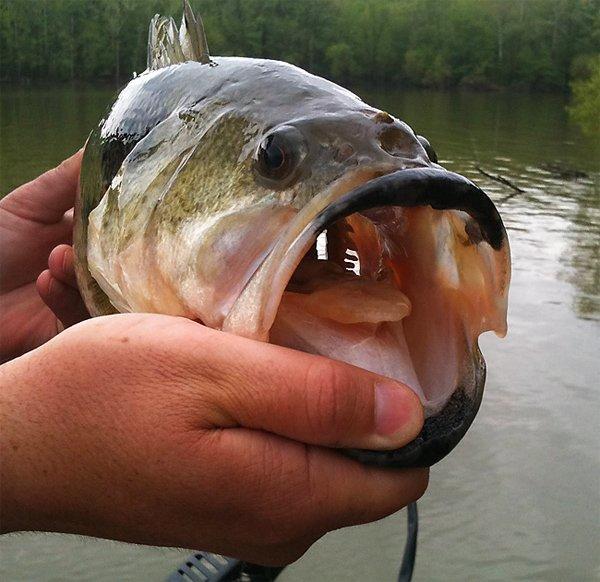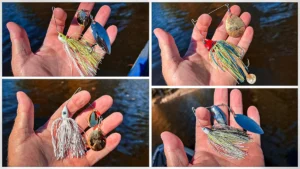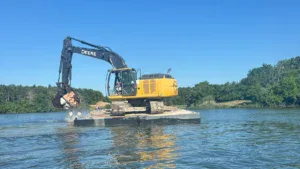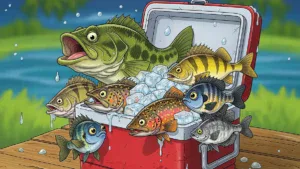“You’re just in a rut,” a friend said.
The situation: I had lost several big fish or not caught a fish weighing more than 5 pounds in several weeks of fishing, while other folks sharing my boat had boated several big bass. When fishing “turns for the worst”, anglers have a tendency to over-analyze the situation. Truth was, I probably was just in a rut, or maybe it was just fishing. But it got me to thinking about ruts. So I started asking guys some of what they often heard or witnessed in other anglers or themselves that had their fishing a little off to say the least.
So we came up with five common assumptions that fishermen make that can lead them to a ditch of despair when it comes to lack of fishing productivity. Ruts can cause an angler to make the cardinal sin of “just going through the motions” and not focusing on triggering fish to feed or to react on every cast. Here are five pitfalls to avoid in your own fishing. Make a conscious effort to avoid that “rut” thinking and you’ll be more productive on every trip.
All fish “sit” in one spot
Of course not every bass in the lake is sitting up next to a single piece of cover waiting on some prey or imitation to happen by. Bass are constantly moving. Studies have indicated that during the warmer months smallmouth bass especially can roam miles each day foraging. The pitfall to avoid here is not covering the water thoroughly with fan casts and varieties of lures.
Think of it like this. You make a cast on a ledge. The bass is making routine passes up and down the ledge. You have to crawl the jig or worm back or grind the crankbait back just as the bass is making a pass up the ledge perpendicular to your cast. The odds are on most casts, the lure isn’t in front of the bass because he’s moving one direction or the other. So you’ve got to make repeated casts in an area until you can find that intersection point, with a presentation that will trigger that fish to react. That’s how a lot of folks find those “sweet spots” or “spots on the spot” that you hear anglers talking about.
All fish are feeding all the time
We have a tendency as anglers to hit spots we’ve had success fishing in the past. And because we caught them there before, we assume they will be chomping the next time we pull up on it. The fact is fish are very much like people. They don’t always eat. In fact they eat in windows and often as groups at times of the year when they are grouped up. But for a large majority of the day and night, they aren’t hungry or eating.
They are however opportunists, much like us. They may not be feeding, but they can be triggered to eat. Sure you might not be hungry, but then your buddy sits down next to you eating a warm chocolate chip cookie. Your other buddy gets up off the couch and gets him one. Before you know it, everyone in the room is eating one. There are cookies everywhere, and finally you can’t stand it and get up and get one for yourself. You trip a bass’s trigger, agitate him long enough or finally just make him mad and he’ll attack. And he’ll often get his buddies fired up to eat something in the process.
Fish that bite will bite again a day later
“Man I shook of 20 down this stretch in practice. They must have left.”
Ever heard that scenario? Last spring I learned a hard lesson preparing for a tournament. My partner and I were hopping from area to area trying to find concentrations of fish in shallow cover. We were hooking an occasional good fish and shaking off a bunch more in several different areas. Come tournament day we hit several of our best areas without a bite. We thought maybe the fish had moved on to get closer to spawn. Maybe they were already caught.
We started to fish similar areas that we didn’t hit in practice and we started jacking the fish again. We had a good showing and got a good check but we knew we could have done a lot better. We both agreed we had conditioned the fish in our areas. By simply letting them gnaw on a bait and then take it away from them, we educated them on our baits.
Kevin VanDam and Brent Ehrler are two of the best anglers on the two major tours and both have told me in interviews for articles that they both want to figure the fish out in practice. They want to find a few biting fish in practice in an area that has the right ingredients to expand. Then learn how to catch them best during the tournament. They don’t want to tempt and tease the bass too much and make the leery of their offerings when the tournament rolls around.
This spot always produces
Like we said earlier; we have a real natural tendency as anglers to fish our memories. Man this spot yielded a 7-pounder last year. This spot got me 20 pounds and a check. The truth is fishing spots are situational just like the fish. We spend our lives as anglers trying to understand the fish. We really should spend our time understanding the forage and how the fish ambush them. The fact is when the bait leaves certain areas, the fish won’t hang out too long waiting for them to come back. They’re eventually going to figure out the bait isn’t coming back.
Spots are seasonal. In colder months, the forage wants to be deep, the will be stunned and most vulnerable to suspending fish often. In those comfortable climates like spring and fall, the forage likes to be shallow and bring the predators shallow with them. Sometimes the bait will be relating to current breaks, certain types of cover and the bass follow seasonal migrations. So just knowing a good spot is not enough. You have to know a good spot and when the spot is good to really add it your plan of attack.
Slower is better
We all heard the same advice from our fathers and grandfathers. Fish slowly and when you think you’re fishing slowly enough, slow down some more. And that can be an effective presentation. But it’s not the only presentation. And when it comes to triggering fishing, slower is actually not as productive as quick fast movements. Darting, diving, and deflecting lures often get bass to make impulsive judgments more than a bait the bass can slowly study and determine might not be the real thing.
Some of the most consistent anglers fish fast and move a bait faster than a lot of anglers ever consider fishing a lure. Some of the best strikes you can have are when you’re ripping a crankbait, burning a spinnerbait, waking a swimbait or pulsing a swim jig.
Don’t get stuck fishing your lures the same way every time. Sure slower can be better at times, especially when the water is very cold. But that doesn’t mean a stop and go, radical jerk and pause or quick movements in small spaces can’t draw a reaction from big fish.
Fishing is not an exact science. But variety is definitely a key and is what keeps us wired2fish. We love to explore the puzzle and figure the pieces out. Some days we seem to predict the fish’s movements and other days we’re the blind squirrel looking for a single nut. So avoid fishing in a rut and just going through the motions. Often just getting aggressive about approach can turn your fishing from misfortune into jackpot.













